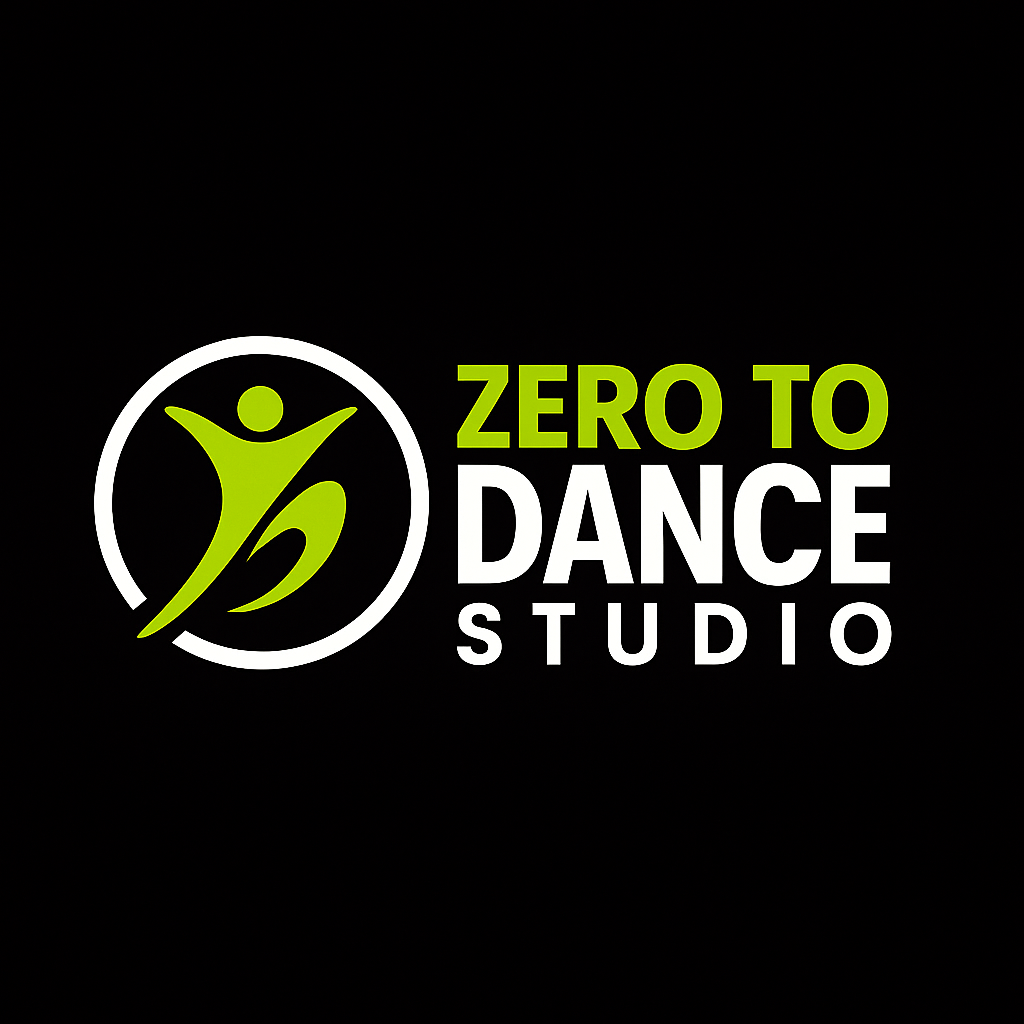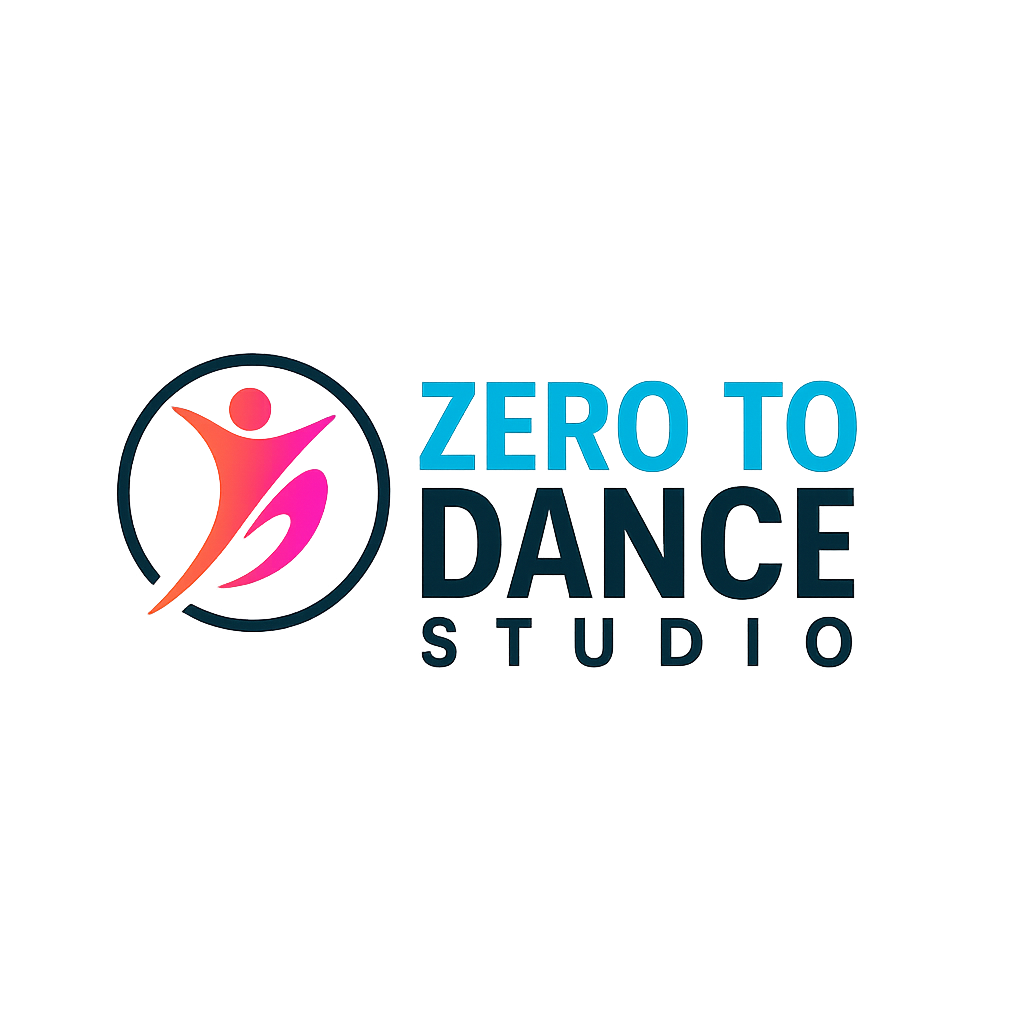A big variety of articles and resources.
Salsa Dance Guide for Beginners: Step-by-Step in 2025
Ever dreamed of owning the dance floor with fiery salsa dance moves but do not know where to start?
Salsa dance is loved worldwide for its infectious rhythms, vibrant energy, and ability to bring people together. It is not just a dance but a fun way to stay fit, relieve stress, and build lasting social connections.
The best part is that anyone, even with two left feet, can master salsa dance with the right step-by-step guidance.
This article is your comprehensive, beginner-friendly guide for learning salsa dance in 2025.
You will discover what salsa is, its fascinating history, core steps, essential techniques, practical tips, and trusted resources to help you start your journey.
What is Salsa? Understanding the Basics
Salsa dance is more than just a series of steps; it is a vibrant expression of culture and connection that spans the globe. To truly appreciate salsa dance, it helps to understand its fascinating history, distinctive music, diverse styles, and the welcoming community that surrounds it.

The Origins and Evolution of Salsa
The roots of salsa dance stretch deep into Cuban and Puerto Rican traditions, blending African, Spanish, and Caribbean influences. Early salsa emerged as a fusion of son, mambo, and other local rhythms. In the 1960s and 70s, salsa evolved further in New York City, where Latin communities added their own flair and energy. This period marked the salsa dance boom, leading to international competitions and a surge in global popularity. For a detailed look at its journey and milestones, visit the Salsa Dance History and Evolution resource.
Salsa Music: The Heartbeat of the Dance
Distinctive salsa music is the driving force behind every salsa dance. Characterized by a lively tempo, it features instruments like congas, timbales, and brass, creating irresistible rhythms. Timing is crucial, as dancers interpret beats and accents in the music. Iconic artists such as Celia Cruz and Marc Anthony offer songs that are perfect for beginners. Listening to classic salsa music helps new dancers internalize rhythm and feel the pulse of salsa dance.
Salsa Styles: Which One Should Beginners Learn?
There are several major styles of salsa dance, each with unique characteristics:
- LA Style (On1): Fast, flashy, danced on the first beat.
- New York Style (On2): Smooth, elegant, emphasizes the second beat.
- Cuban (Casino): Circular, playful, deeply rooted in Cuban tradition.
- Colombian (Cali): Quick footwork, prominent in South America.
For beginners, LA and Cuban styles are often the most accessible. Each style offers a different perspective on salsa dance, so choosing one depends on your personal taste and learning goals.
Social and Cultural Aspects of Salsa
Salsa dance is fundamentally social, bringing people together at parties, clubs, and festivals worldwide. The salsa community is known for its inclusivity and diversity, welcoming dancers of all backgrounds. Beyond fun and connection, salsa dance offers physical and mental health benefits. Studies show regular dancing can reduce stress and boost confidence, making salsa dance a rewarding pursuit for both body and mind.
Salsa in 2025: Trends and Innovations
The world of salsa dance is evolving rapidly. Online classes and virtual communities are making learning more accessible than ever. Fusion styles are emerging, blending salsa with hip-hop, jazz, and other genres. In 2025, salsa dance is reaching new audiences of all ages and backgrounds, ensuring its vibrant legacy continues to grow for generations to come.
Getting Ready: What Every Beginner Needs Before Dancing
Before you step onto the floor for your first salsa dance, a little preparation goes a long way. Setting yourself up with the right gear, space, and mindset can boost your confidence and help you make the most of every lesson.
Choosing the Right Shoes and Clothing
Choosing proper footwear is essential for anyone starting salsa dance. Look for shoes with smooth, non-slip soles that allow you to turn easily without sticking to the floor. Avoid sneakers or rubber-soled shoes, as they can restrict movement and lead to discomfort.
Opt for lightweight, breathable clothing that allows free movement. Many beginners choose flexible pants, skirts, or athletic wear to stay cool and agile. Investing in beginner-friendly dance shoes from reputable brands can make your salsa dance experience far more enjoyable and safe.
Preparing Your Space
Creating a safe practice area is crucial when learning salsa dance at home. Ideally, you need a clear, flat surface about two by two meters in size. Remove any rugs, clutter, or obstacles that could cause trips or slips during practice.
Adding a large mirror can help you check your posture and footwork. Recording your sessions on video is another effective way to spot areas for improvement. A tidy, distraction-free environment lets you focus on your salsa dance progress.
Music and Tools for Practice
Salsa dance thrives on rhythm, so practicing with the right music is key. Start with beginner salsa playlists or tracks with a steady, moderate tempo. Use apps or metronomes to help develop your timing and sense of beat.
Practice tools like video lessons and online tutorials can speed up your learning. Finding a practice partner, either in-person or virtually, adds motivation and helps you master partner work. The right tools make your salsa dance journey smoother and more interactive.
Setting Realistic Goals and Expectations
Learning salsa dance is a journey, not a sprint. Most beginners master the basic steps within four to six weeks if they practice consistently. Be patient with yourself, as progress comes with time and repetition.
Expect to face some frustrations, such as missing beats or forgetting steps, especially in the beginning. Keeping a positive attitude and celebrating small wins will keep your motivation high. Remember, every salsa dance expert started exactly where you are now.
Zero to Dance Studio: Online Salsa Lessons for Beginners
Online courses are a flexible way to start salsa dance, fitting around your schedule and pace. Salsa Beginner Course Details at Zero to Dance Studio offer structured, bite-sized lessons led by expert instructors.
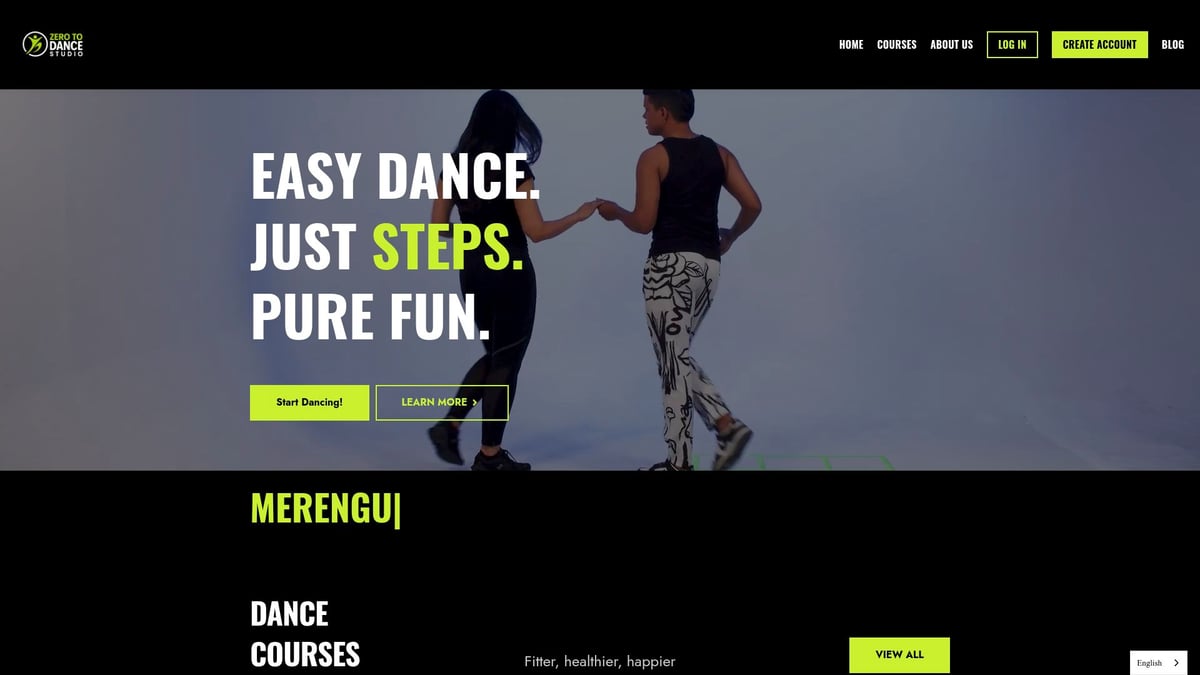
You can learn from anywhere, review material as often as needed, and join a supportive global community. Many new dancers have found success, confidence, and joy through these accessible, on-demand salsa dance lessons.
Step-by-Step Salsa: Core Moves for Absolute Beginners
Ready to learn salsa dance from the ground up? This section walks you through each essential move, so you can start confidently, even if you have never set foot on the dance floor before.
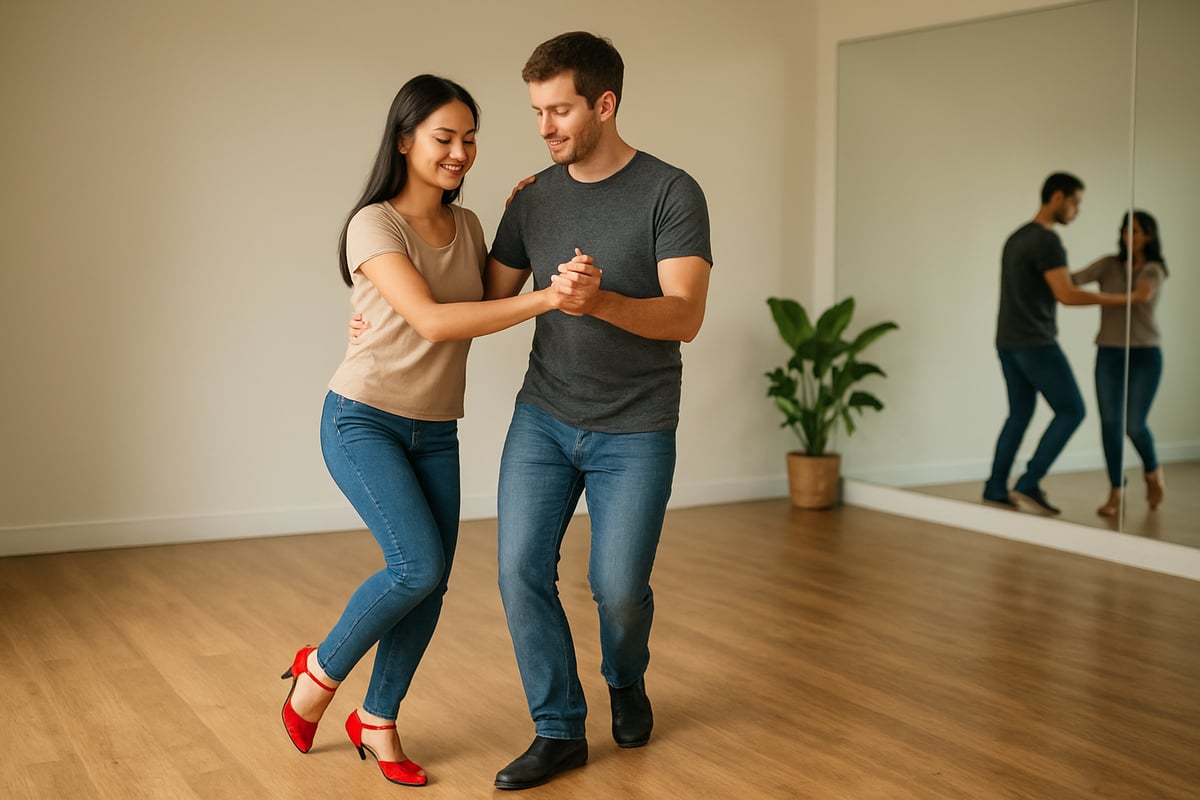
Step 1: Mastering the Basic Step (Forward and Back)
The basic step is the heartbeat of salsa dance. Start with feet together. Step forward with your left foot on count one, shift weight back to your right foot on count two, and bring the left foot back on count three. Pause for count four.
Now, step back with your right foot on count five, shift weight to your left on count six, and bring the right foot back on count seven. Pause for count eight. Repeat this eight-count pattern, focusing on smooth weight transfers.
Common mistakes include stepping too far, bouncing, or losing rhythm. To fix this, keep your steps small and feel the beat in the music. Mastering this move lays the foundation for every other salsa dance step.
Step 2: Side Step and Open Step Variations
After you are comfortable with the basic step, try the side step. Step to the left with your left foot on one, bring your right foot back on two, and close your left foot on three. Repeat to the right starting with your right foot on five.
The open break, another variation, involves stepping slightly away from your partner on counts one and five, then returning to center. Use this move to add variety and transition smoothly between different salsa dance combinations.
Practice these steps with music at a slow tempo. Focus on clean side-to-side movement, and keep your upper body relaxed. These variations help you adapt to different salsa dance styles and social settings.
Step 3: Learning the Right Turn
The right turn is one of the first spins you will encounter in salsa dance. Begin with the basic step, then on count five, pivot on your left foot and turn to the right as you step forward with your right foot. Complete the turn by stepping with your left on six and right on seven.
Leaders often signal the turn with a gentle lift of the follower’s hand. Followers should keep their arms relaxed and eyes up to maintain balance and connection. Practice the right turn solo before trying it with a partner.
Remember to spot a point in front of you to help control dizziness. Smooth, controlled turns are a signature of polished salsa dance technique.
Step 4: The Cross-Body Lead (Essential Partner Move)
The cross-body lead is a key partner move in salsa dance. Leaders step forward on one, open their frame and guide the follower across their body on counts two and three. Followers step forward, pivot, and move to the leader’s left side.
This move creates flow and opens up space for new combinations. Focus on clear communication, gentle guidance, and precise timing. Leaders should avoid pulling or pushing, instead use body movement to signal direction.
Practice the cross-body lead slowly, ensuring both partners understand their roles. Mastery of this move unlocks many possibilities in salsa dance routines.
Step 5: Adding Simple Arm Styling
Once you are comfortable with footwork, add basic arm styling to your salsa dance. For men, keep elbows bent with relaxed, confident movements. Women can use gentle wrist circles or elegant arm lines.
Start by practicing arm positions separately, then integrate them with your steps. Avoid overextending or tensing your arms, as this can disrupt your balance and timing.
Watch professional salsa dancers for inspiration. Simple styling adds flair and personality, making your salsa dance look polished without overwhelming your basics.
Step 6: Putting It All Together—Your First Salsa Combination
Now it is time to combine everything. Link the basic step, side step, right turn, and cross-body lead into a smooth sequence. Start with the basic, transition to the side step, add a right turn, then flow into a cross-body lead.
Practice chaining these moves together with music. Focus on maintaining rhythm, smooth transitions, and steady timing throughout your salsa dance.
Use beginner-friendly songs with a clear beat. Repeat the combination until it feels natural. This routine forms the backbone of your first salsa dance experience.
Troubleshooting Common Beginner Challenges
Every beginner encounters challenges in salsa dance. Staying on beat can be tough, so try clapping or tapping your foot to internalize the rhythm. If you feel nervous, remember that everyone started as a beginner.
Common frustrations include losing balance, forgetting steps, or feeling self-conscious. Break moves down into smaller parts, and celebrate small wins. Consider recording yourself to spot areas for improvement.
For more practical tips, stories, and encouragement, check out the Salsa Dance Blog Articles. Learning salsa dance is a journey—enjoy each step, and do not hesitate to connect with fellow learners for support and motivation.
Essential Salsa Techniques: Timing, Connection, and Musicality
Success in salsa dance starts with mastering several key techniques. These fundamentals will help you move confidently, stay on beat, and connect with partners on any dance floor. Let us break down the essentials every beginner should know.
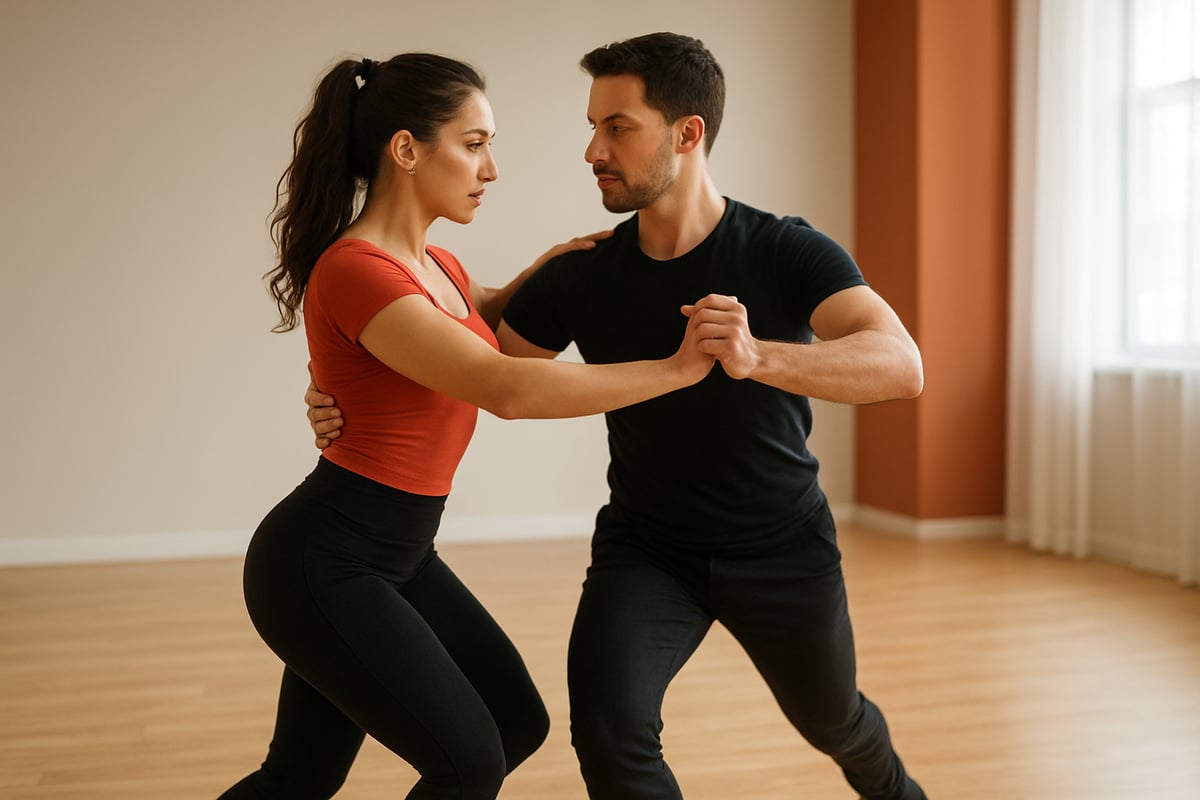
Understanding Salsa Timing and Counts
Salsa dance is built on distinct rhythmic patterns. The two most popular timings are On1 and On2. On1 timing, common in LA style, begins the basic step on the first beat of the music. On2, found in New York style, starts on the second beat, giving a different feel.
Here is a quick table comparing the two:
| Timing Style | Start Beat | Feel | Popular Region |
|---|---|---|---|
| On1 | 1 | Direct, energetic | Los Angeles |
| On2 | 2 | Smooth, syncopated | New York |
To master salsa dance, listen for the strong "1" in a song. Count "1-2-3, 5-6-7" as you step, remembering that beats 4 and 8 are pauses. Practice clapping or stepping to the rhythm with slow tracks. Over time, your internal timing will improve, letting you stay on beat in any salsa dance setting.
Leading and Following Fundamentals
Connection is at the heart of partner work in salsa dance. The leader initiates movement, while the follower responds with sensitivity and trust. Both roles require a strong, relaxed frame and clear communication.
Establish a comfortable handhold and maintain gentle tension in your arms. Avoid pulling or pushing with force. Instead, use subtle body cues and weight shifts to signal direction and timing.
Tips for effective leading and following:
- Keep elbows slightly bent and arms responsive.
- Leaders: Initiate moves with your core, not just your hands.
- Followers: Maintain light resistance, allowing movement without stiffness.
A positive connection makes salsa dance enjoyable and helps both partners shine on the floor.
Body Movement and Hip Action
Salsa dance is famous for its expressive hip motion, known as Cuban motion. This movement starts from the knees and hips, not just the feet. As you step, bend your knees slightly and let your hips naturally shift side to side.
Try these exercises to develop fluidity:
- Practice basic steps slowly, focusing on hip sway.
- Stand in front of a mirror and isolate hip movements.
- Alternate foot pressure to accentuate each step.
Keep your posture upright, shoulders relaxed, and core engaged. Good body movement enhances the look and feel of your salsa dance, making every step more dynamic.
Musicality: Dancing with the Music
Beyond steps and timing, musicality brings salsa dance to life. Listen for accents, breaks, and changes in the music. Responding to these cues lets you improvise and express your personality.
Popular salsa music features a vibrant mix of percussion, brass, and vocals. Start by moving to the rhythm, then add variations when you hear musical changes. Watch professional dancers interpret the music—they often pause, syncopate, or add styling to match the song’s mood.
For a deeper understanding of how rhythm and culture shape the dance, explore this Salsa Dance Overview and Features guide.
Building Confidence and Stage Presence
Confidence transforms your salsa dance experience. If you feel nervous, remember every dancer started as a beginner. Visualize success, focus on your progress, and celebrate small wins.
Practice regularly, both alone and with partners, to reinforce your skills. Stand tall, make eye contact, and smile. These simple habits project assurance on the floor.
Many beginners share stories of overcoming shyness and gaining self-esteem through salsa dance. With time and dedication, you will find your unique style and presence.
Practicing Salsa at Home: Tips, Drills, and Progress Tracking
Setting up a solid home practice is key for steady progress in salsa dance. With the right approach, beginners can build skills, confidence, and rhythm from their own living room.
Designing an Effective Practice Routine
Consistency is essential when learning salsa dance at home. Aim for short, focused sessions, about 20 to 30 minutes, several times per week. Start each session with a gentle warm-up to loosen your body and tune into the salsa rhythm.
A basic practice structure might include:
- Warm-up and stretching (5 minutes)
- Footwork drills (10 minutes)
- Practicing basic steps and turns (10 minutes)
- Cool-down and reflection (5 minutes)
Alternate between steps to keep practice fresh and engaging. This routine helps your body adapt and builds muscle memory for salsa dance.
Solo Practice vs. Partner Practice
Practicing alone allows you to focus on footwork, timing, and style without distractions. Use mirrors or video to check your posture and movement. Solo drills are perfect for mastering the salsa dance basics.
When possible, practice with a partner to develop lead and follow skills. Partners help you learn connection, hand signals, and real dance flow. If you do not have a partner at home, try online meetups or video calls to practice together virtually.
Both solo and partner practice are valuable for every salsa dance beginner.
Using Technology to Accelerate Learning
Modern tools make it easier than ever to progress in salsa dance. Use dance apps or online lessons to access step-by-step guidance and expert feedback. Recording your practice sessions lets you spot areas for improvement and track your journey.
Many beginners turn to platforms like About Zero to Dance Studio for structured courses and a supportive learning environment. These resources offer flexible scheduling and professional instruction, perfect for busy lifestyles.
Online communities and virtual workshops also connect you with other salsa dance learners worldwide.
Measuring Progress and Staying Motivated
Tracking your growth keeps motivation high. Set clear, achievable goals, such as learning a new step each week or practicing a full routine with music. Use a dance journal or record short videos to document improvements.
Celebrate small wins, like keeping time with the salsa dance beat or nailing a tricky turn. Share progress with friends or online groups for encouragement and accountability.
Staying positive and recognizing milestones helps you enjoy the salsa dance journey.
Overcoming Plateaus and Frustration
Everyone hits a plateau during their salsa dance learning. If progress stalls, try changing the music, learning a new style, or switching up your routine. Sometimes, a new teacher or fresh playlist reignites your enthusiasm.
Reach out to the salsa dance community for support and advice. Remember, patience and persistence are as important as practice. Every dancer faces challenges, but with the right mindset, you will keep moving forward and enjoy every step.
Joining the Salsa Community: Social Dancing, Classes, and Beyond
Becoming part of the salsa dance community is an exciting milestone for every beginner. Whether you crave the thrill of a packed dance floor or prefer connecting through virtual events, there are countless ways to immerse yourself in salsa dance culture. In this section, explore how to find events, join classes, connect online, and keep your passion for salsa dance alive for years to come.
Finding Salsa Events and Socials in 2025
The salsa dance scene in 2025 is more vibrant and accessible than ever. Local salsa dance nights, festivals, and workshops take place in cities worldwide, offering opportunities for dancers of all levels. Many events now blend in-person and virtual participation, making it easy for anyone to join regardless of location.
Hybrid socials have become popular, with live DJs streaming music to both physical and online attendees. You can dance at home or in a club, all while being part of a global community. To find events, check local dance studios, community boards, or dedicated salsa dance event websites.
When attending your first social, remember basic etiquette:
- Greet your partner with a smile and introduce yourself.
- Wait for the current song to end before asking someone to dance.
- Thank your partner after each dance.
The salsa dance community is welcoming and inclusive. Do not worry if you are a beginner—most people are happy to help newcomers feel comfortable.
Taking Your First Group or Private Class
Starting your salsa dance journey with a class is a smart step. Group classes are ideal for meeting other beginners and practicing with different partners. Private lessons, on the other hand, offer personalized feedback and faster skill development.
Expect to learn fundamental steps, timing, and partner connection in your first class. Instructors usually break down movements into manageable parts, making it less intimidating for new dancers. Be sure to wear comfortable clothing and bring water.
When choosing a class or instructor, consider:
- The instructor’s teaching experience and style.
- Class size and student-to-teacher ratio.
- Reviews or testimonials from other salsa dance students.
Many studios offer trial classes, so you can find the right fit before committing.
Online Salsa Communities and Resources
The digital era has transformed how people connect in the salsa dance world. Online forums, social media groups, and YouTube channels offer resources for every skill level. Virtual challenges and socials let you practice and share your progress with dancers around the globe.
Joining an online salsa dance community provides:
- Access to free tutorials and technique breakdowns.
- Opportunities to join virtual dance meetups.
- Support and encouragement from peers and instructors.
Popular platforms include Facebook groups, Reddit threads, and dedicated salsa dance websites. These communities help you stay motivated and inspired, even on days when you cannot attend in-person events.
Advancing Your Skills: Next Steps After the Basics
Once you are comfortable with the basics, the salsa dance journey naturally leads to exploring new styles and related dances. Many dancers try intermediate moves, intricate footwork, and even performance opportunities at local events.
Curious about the different styles within salsa dance? Learning about the history and unique characteristics of each style can help you choose your next focus. Explore Salsa Dance Styles Explained to discover LA, New York, Cuban, and Colombian styles in detail.
You might also branch out to related dances like bachata or cha-cha. If you are interested in bachata, consider reviewing the Bachata Beginner Course Overview to see how you can expand your Latin dance skills.
Staying Inspired and Connected
Long-term success in salsa dance comes from staying inspired and connected to the community. Many dancers share stories of friendships, travel, and improved confidence gained through salsa dance.
To keep your passion alive:
- Attend regular socials and workshops.
- Set new dance goals, such as performing or trying a new style.
- Celebrate small achievements and milestones.
Remember, salsa dance is not just about steps—it is about connection, joy, and lifelong learning. Whether you are dancing at home, in a studio, or with friends online, the salsa dance community is always ready to welcome you.
You’ve just explored everything you need to start your salsa journey—from understanding the rhythms and styles to mastering essential steps and building your confidence on the dance floor. Remember, every great dancer was once a beginner, and with the right guidance, you can shine at any party or event. If you’re ready to put what you’ve learned into action and experience the excitement of salsa firsthand, why not begin today? Learn to dance Salsa in just 15 minutes Get started free
Your first steps are just a click away—no previous experience needed.
